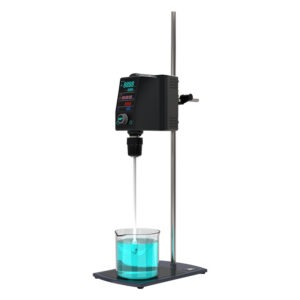
The rise of smart technologies is revolutionizing the chemical instrument industry, paving the way for instruments that are not only more efficient but also more intelligent. Smart chemical instruments leverage connectivity, data analytics, and automation to enhance laboratory operations. This article explores the future of smart chemical instruments and their potential impact on the industry.
1. Connectivity and IoT Integration
Smart chemical instruments are increasingly connected through the Internet of Things (IoT), allowing them to communicate with other devices and systems. This connectivity facilitates real-time data exchange and remote monitoring, enabling users to track instrument performance and experiment status from anywhere.
As IoT technology continues to advance, the integration of smart instruments with laboratory information management systems (LIMS) and enterprise resource planning (ERP) systems will become more seamless, streamlining workflows and improving data accuracy.
2. Enhanced Data Analytics
Smart instruments are equipped with advanced data analytics capabilities that provide deeper insights into experimental processes. By collecting and analyzing data in real-time, these instruments can identify trends, optimize conditions, and predict outcomes. This predictive capability allows researchers to make informed decisions and refine their methodologies.
For instance, smart instruments can automatically adjust parameters based on real-time feedback, improving the quality and consistency of results while reducing trial-and-error experimentation.
3. Automation and Robotics
The future of smart chemical instruments also includes increased automation and robotics. Automated systems can perform complex tasks with minimal human intervention, enhancing productivity and reducing the risk of errors. This trend is particularly valuable in high-throughput environments, where speed and accuracy are paramount.
As automation technology advances, we can expect to see more sophisticated robotic systems capable of handling a wider range of laboratory tasks, from sample preparation to data analysis.
4. Sustainability Considerations
Smart chemical instruments are designed with sustainability in mind, utilizing energy-efficient technologies and minimizing waste. For example, instruments that optimize resource usage can significantly reduce the environmental impact of chemical processes.
As sustainability becomes a key focus for many industries, smart instruments that contribute to greener practices will be highly valued in the market, driving demand for eco-friendly solutions.
5. Customization and User-Centric Design
The future of smart chemical instruments will emphasize customization and user-centric design. As researchers’ needs become more specialized, manufacturers will increasingly offer customizable instruments that can be tailored to specific applications. User-friendly interfaces and intuitive controls will enhance the overall experience, making it easier for researchers to operate complex systems.
This focus on customization and usability will ensure that smart instruments meet the diverse needs of modern laboratories.
Conclusion
The future of smart chemical instruments is bright, characterized by enhanced connectivity, data analytics, and automation. As these technologies continue to evolve, they will transform laboratory practices, improve efficiency, and promote sustainability. By embracing smart innovations, the chemical instrument industry can lead the way in advancing research and development.

